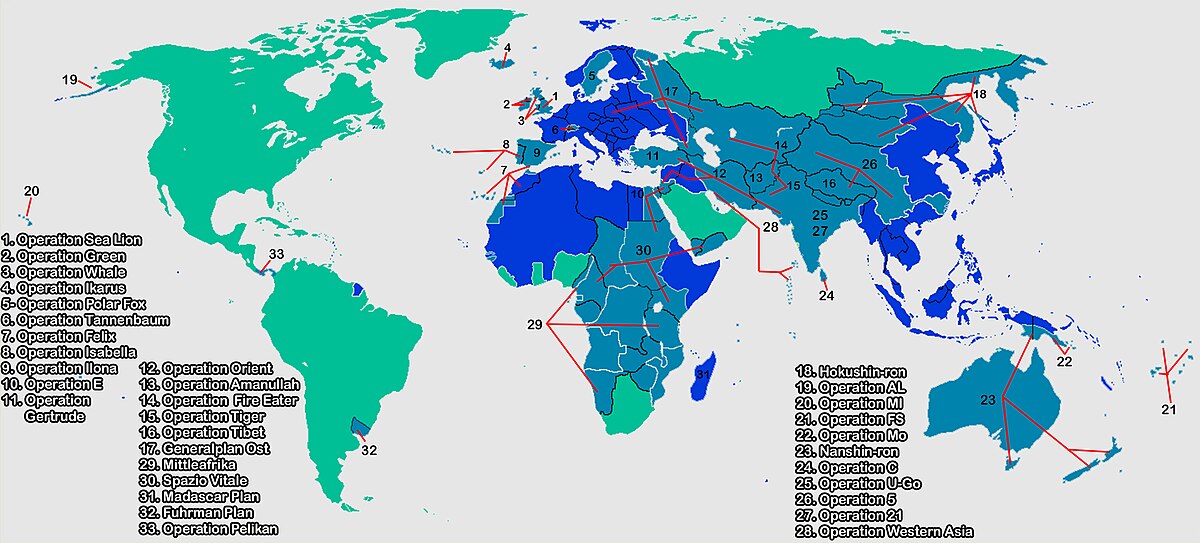Operation Long Jump, known in German as Rösselsprung, was a Nazi plan aimed at assassinating the leaders of the Allies—the ‘Big Three’: Stalin, Churchill, and Roosevelt—during their meeting in Tehran in November 1943. This assassination plot would have had significant implications for World War II had it succeeded.

Nazi espionage operations were widespread during WWII. Image credit: National Endowment for the Humanities
The plan was orchestrated by Otto Skorzeny, a notorious SS commando known for his audacious rescue of Mussolini. Skorzeny’s selection as the leader was due to his previous successes and close relationship with high-ranking Nazi officials. His team was composed of elite German commandos trained for covert operations.

Axis Powers operational plans during WWII. Image credit: Wikipedia
Soviet intelligence played a vital role in foiling the plot. Key figures, such as Nikolai Kuznetsov, infiltrated German ranks and learned of the assassination attempt while gathering crucial information about Nazi plans. This intelligence enabled the Allies to enhance security around the conference.

Intelligence operations were crucial during WWII. Image credit: Imperial War Museums
Ultimately, Operation Long Jump was thwarted, and the attempted assassination did not occur. This failure had significant historical consequences, allowing the Allied leaders to discuss strategies crucial to the war’s eventual outcome without the threat of being killed.
Categories: Espionage, Historical Events, Military History, War History, World War II
Tags: Allied Leaders, Assassination Plot, Military History, Nazi Germany, Operation Long Jump, Otto Skorzeny, Tehran Conference, WWII
Religion: Not applicable
Country of Origin: Germany, Iran, Soviet Union, United Kingdom, United States
Topic: Military History
Ethnicity: Not Applicable


